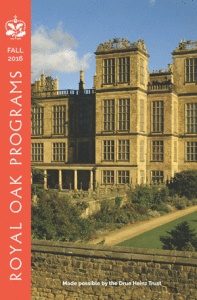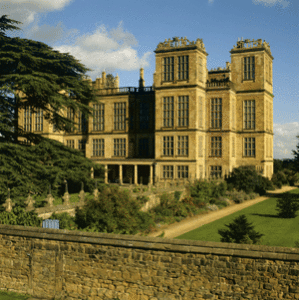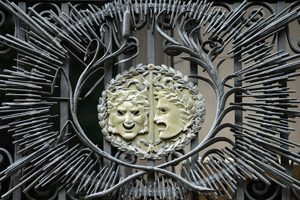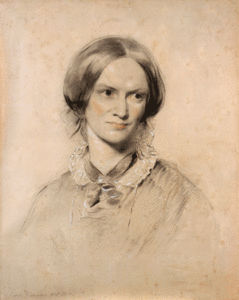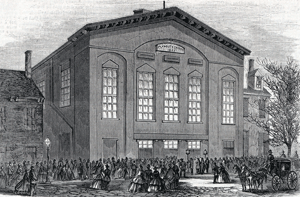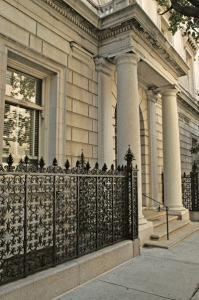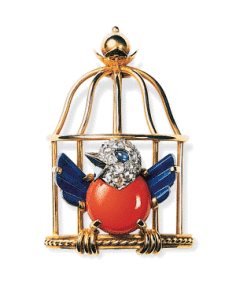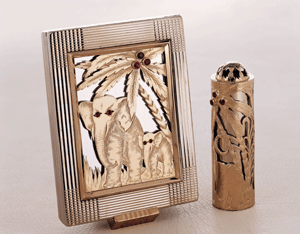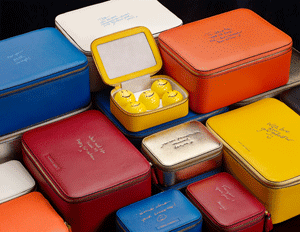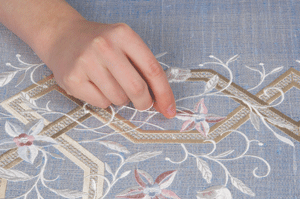Registration is now open for the Fall 2016 season of the Drue Heinz Lectures
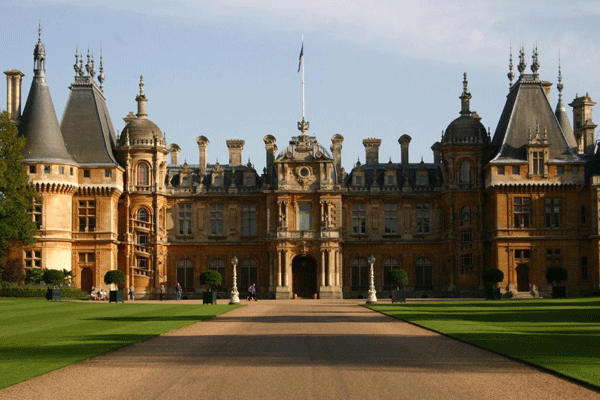
Let us take you from the grounds at Waddesdon Manor to the library at Windsor Castle and everywhere in between
Royal Oak members enjoy special prices on all lecture tickets. Join Now
We are pleased to present our Fall 2016 Drue Heinz Lecture Series. Celebrate the latest scholarship and brand new publications with renowned speakers like best-selling author Anne Sebba, Vanity Fair writer-at-large James Reginato, and Tudor historian Sarah Gristwood!
General registration begins today, August 30th. For special access to tours and events, become a Heritage Circle or Supporting Level member today, call 212.480.2889 ext. 205. You’ll unlock exclusive, behind-the-scenes tours and priority registration while supporting our important mission!
Here’s what’s coming up this season:
Dr. Wolf Burchard – Hardwick Hall: An Elizabethan Masterpiece
Built in the 16th century, Hardwick Hall is one of the National Trust’s greatest architectural landmarks. Its collection bear witness to Bess of Hardwick’s vision, wealth, and sheer audacity to construct a large and showy building—or Prodigy house—that still takes people’s breath away centuries later.
We are pleased to welcome Dr. Wolf Burchard, the National Trust’s Furniture Research Curator, who will discuss the house’s exciting history and illustrate some of its renowned treasures. He will also discuss Hardwick’s 19th-century occupants, including the glamorous retired bachelor William Cavendish, 6th Duke of Devonshire, and he will revisit the final years of Hardwick Hall’s private ownership by Evelyn, Duchess of Devonshire, before the house was transferred to the National Trust in 1959.
Washington DC: September 29
New York City: October 4
Phillip J. Dodd – An Ideal Collaboration: The Art of Classical Details
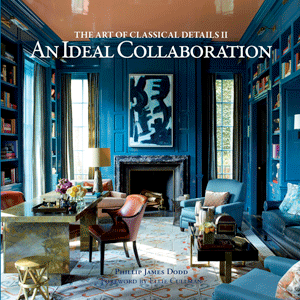 In the follow-up to his critically acclaimed book The Art of Classical Details, Phillip James Dodd—an English born architect, author, and educator—continues his look at some of the finest examples of contemporary classical architecture in Great Britain and the United States in his latest publication An Ideal Collaboration: The Art of Classical Details. Featuring projects by architects like Robert Adam, John Simpson and Julian Bicknell, Mr. Dodd examines how collaboration—between architects, decorators, landscape designers and others—is the key to their successful design. Mr. Dodd reveals the pivotal role that collaboration plays in the design and construction of a home in order to create successful timeless designs.
In the follow-up to his critically acclaimed book The Art of Classical Details, Phillip James Dodd—an English born architect, author, and educator—continues his look at some of the finest examples of contemporary classical architecture in Great Britain and the United States in his latest publication An Ideal Collaboration: The Art of Classical Details. Featuring projects by architects like Robert Adam, John Simpson and Julian Bicknell, Mr. Dodd examines how collaboration—between architects, decorators, landscape designers and others—is the key to their successful design. Mr. Dodd reveals the pivotal role that collaboration plays in the design and construction of a home in order to create successful timeless designs.
New York City: September 15
Oliver Everett – The Monarch’s Taste: Treasures from the Royal Collection
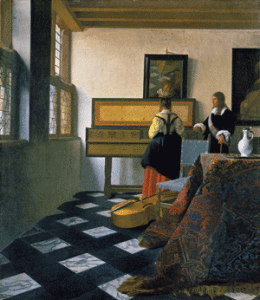
“Lady at the Virginals with a Gentleman,” by Johannes Vermeer; Royal Collection Trust/© Her Majesty Queen Elizabeth II 2016
Oliver Everett, Librarian Emeritus for Royal Library, Windsor Castle returns for a fascinating look at The Royal Collection—one of the last great European Dynastic collections to survive in royal ownership, with over 485,000 objects collected from King Henry VIII to the present Queen. It is an unique and valuable record of the personal tastes of kings and queens over the past 500 years, including works by many great artists including da Vinci, Rembrandt, Vermeer and Holbein; Sèvres porcelain; jewelry, like the Diamond Diadem and the Cullinan diamond; furniture and even Fabergé Russian Imperial Easter eggs. In his lavishly illustrated talk, Oliver Everett will demonstrate the range and magnificence of the Collection, as well as show the varying collecting interests of individual monarchs and other members of the Royal family.
Philadelphia: September 26
New York City: September 28
Oliver Everett – “A Feast of Treasures and Curiosities”: The Collections at Windsor Castle
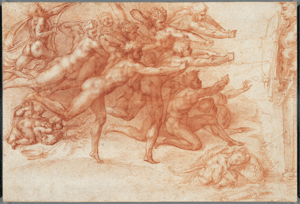
Archers shooting at a target, by Michelangelo, 1530; Royal Collection Trust/© Her Majesty Queen Elizabeth II, 2016
Housed within the walls of Windsor Castle is the Royal Library, described as “a feast of treasures and curiosities.” The Library has one of the world’s finest collections of Old Master Drawings, including the largest group of drawings by Leonardo da Vinci, as well as fans, clocks, jewelry, miniatures, over 4,500 military maps and documents, and even the shirt in which King Charles I was executed.
Fine bindings, manuscripts and rare books include the Mainz Psalter, 1457; the Sobieski Book of Hours, 1420; and annotated copies of books by Sir Walter Scott and Benjamin Disraeli. Oliver Everett, Librarian Emeritus for the Royal Library, Windsor Castle, will discuss many of these remarkable objects, some usually only seen by Her Majesty, her guests and visiting scholars.
Charleston: October 4
Sarah Gristwood – Game of Queens: The Women Who Ruled 16th-Century Europe
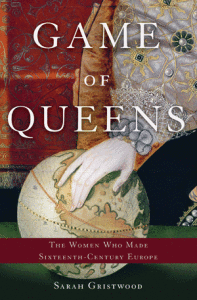 From Isabella of Castile to her daughter Katherine of Aragon and granddaughter Mary Tudor; from Louise of Savoy to her daughter Marguerite of Navarre; from Marguerite’s admirer Anne Boleyn to her daughter Elizabeth Tudor—the 16th century was marked by an explosion of female rule scarcely equaled even today.
From Isabella of Castile to her daughter Katherine of Aragon and granddaughter Mary Tudor; from Louise of Savoy to her daughter Marguerite of Navarre; from Marguerite’s admirer Anne Boleyn to her daughter Elizabeth Tudor—the 16th century was marked by an explosion of female rule scarcely equaled even today.
Following the passage of power from mother to daughter, and mentor to protégé, celebrated historian and author Sarah Gristwood weaves together the stories of familiar figures such as Anne Boleyn with those of lesser-known women in a striking portrayal of one of the most dramatic periods in European history, based on her new book Game of Queens: The Women Who Made Sixteenth-Century Europe (Perseus Books 2016). Epic in scale, this game of queens is a remarkable tale of skill and ingenuity and the challenges faced by women in power – many of which still hold relevant today.
Chicago: November 1
Washington DC: November 2
Philadelphia: November 7
New York: November 9
Boston: November 10
James Reginato – Modern Aristocrats: Ancestral Houses and Their Stories
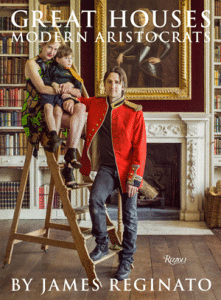 The history of England and the British people is inextricably linked with the stories of its leading aristocratic dynasties and the seats they have occupied for centuries. These houses have survived great wars, economic upheavals, and at times scandal and tragedy.
The history of England and the British people is inextricably linked with the stories of its leading aristocratic dynasties and the seats they have occupied for centuries. These houses have survived great wars, economic upheavals, and at times scandal and tragedy.
In his first book, Great Houses, Modern Aristocrats (Rizzoli, 2016), James Reginato—writer-at-large for Vanity Fair—takes an uniquely intimate and lively look at some of Great Britain’s stateliest houses and the remarkable families who live inside them. Among them, the exquisite Old Vicarage in Derbyshire, the last residence of the late Dowager Duchess of Devonshire; Villa Cetinale in Tuscany owned by the 7th Earl of Durham; Blenheim Palace, the home of the 11th Duke of Marlborough; Broughton Castle, home of the 21st Baron Saye and Sele; and The Grove in Oxfordshire, home of Countess Mountbatten of Burma and Lady Pamela Hicks.
Chicago: October 6
New York: October 31
Philadelphia: November 1
Atlanta: November 29
Anne Sebba – Les Parisiennes: Women in Wartime Paris 1939-1949
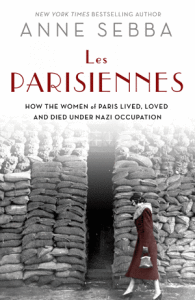 What did it feel like to be a woman living in Paris during the war years—a time of fear, power, courage, deprivation and secrets until finally, renewal and retribution?
What did it feel like to be a woman living in Paris during the war years—a time of fear, power, courage, deprivation and secrets until finally, renewal and retribution?
While the men were off fighting or imprisoned, it was the women in Paris—including British and American—who came face to face with the German conquerors on a daily basis. From collaborators and resisters; Nazi wives and spies; mothers and mistresses; writers and courtiers, Parisian women made life-and-death decisions every day and would do anything to survive.
Based on her new book, Les Parisiennes: How the Women of Paris Lived, Loved, and Died Under Nazi Occupation (St. Martin’s Press, 2016), best-selling author Anne Sebba explores the fascinating lives of these women, using first-hand accounts and letters, revealing how these women came to terms with their tumultuous experiences during the war and after the Liberation. She will also describe the cultural and economic effect of the American and British diplomats and tourists who flooded Paris after the war.
Philadelphia: October 17
New York City: October 19
Boston: October 20
Los Angeles: October 25
San Francisco: October 26
The Lord Watson of Richmond – Churchill’s Legacy: Two Speeches to Save the World
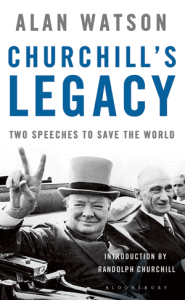 Two of the most famous, controversial, and formative orations of the post-World War II era were given by former British Prime Minister, Winston Churchill.
Two of the most famous, controversial, and formative orations of the post-World War II era were given by former British Prime Minister, Winston Churchill.
The first was presented in 1946 on American soil, in the small town of Fulton, Missouri, where Churchill alerted the world to the threat posed by Stalin and called for U.S. support. His description of “an iron curtain [that] has descended across the Continent,” and his call for a united Europe “from which no nation should be permanently outcast” was one of the first pleas for European cooperation to preserve world safety. That same year, Churchill’s talk at the University of Zurich advocated a “United States of Europe” to look toward a peaceful cooperative future, rather than backward to the horrors of past wars and the desire for revenge.
Inspired by his new book, Churchill’s Legacy: Two Speeches to Save the World (Bloomsbury 2016), Lord Watson will explain how Churchill’s “iron curtain” announced the beginning of the Cold War and changed the way the Western world viewed communism. He will describe the resulting controversy and explain how these speeches were integral to the emergence of NATO and the Marshall plan, committing the U.S. to Europe’s economic recovery and foreshadowing the EU today. Lord Watson will also show how these two speeches presented a new prospect of recovery and hope – both for Churchill as a political pioneer, and for the rest of the world.
Philadelphia: October 24
New York City: October 26
Royal Oak Member Tour Highlights
Please note all tours are limited to 20 people and require walking, standing and possible stair-climbing. Some tours are open to Royal Oak supporting-level members only. Become a supporting-level member today by clicking here or calling 212.480.2889 ext. 205. Upgrade
For a complete listing of programs, visit us online: www.royal-oak.org/lectures
Private Tour: The Players Club
New York City
Date/Time: TBA
In 1888, Mr. Booth—who was also the brother of John Wilkes Booth—purchased a townhouse at 16 Gramercy Park South to form a men’s club for members interested in theatre, fine arts and letters, journalism and commerce. The club’s Great Hall is dominated by a 20-ton fireplace with a Stanford White designed white marble mantel with the Club’s logo. The Billiards Room boasts Mark Twain’s favorite cue, and portraits by Norman Rockwell and Al Hirschfeld as well as artwork by famed actors John Barrymore and James Cagney line the walls. The dining room, with its stag horn chandelier (both designed by Stanford White) features original 1901 stained glass windows from the Garrick Theatre in Philadelphia. Its extensive library, started by Edwin Booth’s personal collection, is considered to be one of finest repositories of theatre reference, art and memorabilia today.
Exhibition Tour: Charlotte Brontë: An Independent Will
New York City
September 30
To commemorate the 200th anniversary of her birth, The Morgan Library & Museum presents Charlotte Brontë: An Independent Will, which traces her creative path from reluctant governess to published poet and commanding novelist and presents an intimate portrait of one of England’s most celebrated authors.
Christine Nelson, Drue Heinz Curator, Literary & Historical Manuscripts will lead us through this exhibition that brings together literary manuscripts, letters, and rare printed books with personal artifacts, drawings, and photographs. Highlights include Brontë’s earliest surviving miniature manuscript, her portable writing desk and paint box, one of her own dresses, and a pair of her ankle boots. Also on view—for the first time in North America—will be a portion of the manuscript of Jane Eyre from the collection of the British Library, open to the unforgettable scene in which Jane tells Rochester, “I am no bird; and no net ensnares me: I am a free human being with an independent will; which I now exert to leave you.”
Walking Tour: Sacred Buildings & Stained Glass
Brooklyn Heights
October 14
In the mid-1800s, Brooklyn was known as the “City of the Churches,” where steeples towered high above its residential homes and farms. Nowhere was this more evident than the quaint neighborhood of Brooklyn Heights.
With so many churches beautifully preserved, Brooklyn Heights has the largest concentration of stained glass by Tiffany & Co. in their original settings. Join architectural historian Matt Postal, for an exploration of some of these beautiful sacred buildings, including the First Unitarian Congregational Society, whose sanctuary boasts a legacy of Tiffany stained glass windows; and Joseph C. Wells’ Plymouth Church, famous for having had the fiery anti-slavery minister Henry Ward Beecher. We will also stop by Our Lady of Lebanon, which was built in 1846 and features a pair of bronze doors from the famed French luxury liner the Normandie; and the former Spencer Memorial Church, dating back to 1851 and possibly the first church converted into apartments in New York City!
Private Passions: Classic Albert Hadley Style
New York City
October 18
One of Albert Hadley’s last decorating projects in New York City was for a long time client and close friend. Over the years, Hadley had worked on the owner’s first New York City apartment as well as her home in Connecticut so when the couple bought their Park Avenue apartment in 1999, they immediately asked Hadley to transform their new home. He gutted the apartment—the owner explains that Hadley “wouldn’t decorate a space if the bones weren’t good”—and decorated it in what she calls classic Albert Hadley style.
“It is traditional with simplicity to it and Albert used fabrics and furniture he designed and combined it with pieces from our other homes.” The home is filled with objects collected by the owner like antique carpets such as Sultanabad and Kierman, a Japanese screen, modern works on paper (including lithographs by Picasso and Ellsworth Kelly), and 17th-and-18th-century American and European clocks collected by her husband, “Even though he was always late,” she recalls ironically. Antique and modern art are blended together: the library features a collection of 19th-century English dog paintings while a Francois Gilot painting hangs in the living room. Hadley decorated the breakfast room by decoupaging menus amassed by the homeowners on their international travels, evoking dinners attended around the world–one from the White House is her favorite.
Private Tour – Harkness House: A Gilded Age Mansion
New York City
October 22
One of New York’s great architectural treasures, Harkness House sits on the corner of Fifth Avenue and 75th Street. It was designed by James Gamble Rogers and built in 1908 for Edward Harkness, heir to the Standard Oil fortune and his wife Mary Harkness. An Italian Renaissance Revival mansion, it features a marble façade enclosed by an elaborate wrought-iron fence inspired by that of the Scalegari tombs in Verona, Italy. Said to be one of the most intact mansions on Fifth Avenue, it boasts seven floors, large public rooms, 14 servants’ rooms, kitchens, pantries, storerooms, mechanical rooms, and more. The gorgeous interiors originally were filled with furnishings and an extensive art collection including remarkable paintings by Holbein, Thomas Gainsborough and Gilbert Stuart. Although the interior now accommodates private offices for business use, many of the period details remain. Walk back into New York’s Millionaire’s Row as Director and Curator, Paul Wentworth Engel offers a private tour of this extraordinary mansion.
Tea & Book Talk at Rizzoli Bookstore: Paris, Liberation & Fashion
New York City
October 28
For decades, Paris has been synonymous with fashion. Even during the horrors of World War II, clothing and accessories played an important role in how women behaved during the German Occupation—using dress as a tool of resistance against the enemy. The fashion industry was also significant to how France rebuilt itself following the Liberation.
Best-selling author Anne Sebba will show how dressing fashionably was considered far from trivial for Parisiennes throughout the War; it was a matter of personal and national pride. She will also talk about how after the war ended, French artists and designers dreamed up a bold and imaginative scheme, aimed at Americans, to ensure Paris remained the capital of fashion in the post-war world.
The triumph of Parisian haute couture was reached with the extravagant and opulent “New Look” of Christian Dior that debuted in 1947. The popularity of this new mode of dress enabled French couture and Parisian style to dominant the fashion world and its classic elegance remains timeless and influences design today. Join Royal Oak for a special afternoon tea and book talk with this fascinating author!
This event is FREE and open to all Royal Oak members! Registration is required.
Tea & Book Talk at Freeman’s Auction House: Paris, Liberation & Fashion
Philadelphia
October 29
For decades, Paris has been synonymous with fashion. Even during the horrors of World War II, clothing and accessories played an important role in how women behaved during the German Occupation—using dress as a tool of resistance against the enemy. The fashion industry was also significant to how France rebuilt itself following the Liberation.
Best-selling author Anne Sebba will show how dressing fashionably was considered far from trivial for Parisiennes throughout the War; it was a matter of personal and national pride. She will also talk about how after the war ended, French artists and designers dreamed up a bold and imaginative scheme, aimed at Americans, to ensure Paris remained the capital of fashion in the post-war world.
The triumph of Parisian haute couture was reached with the extravagant and opulent “New Look” of Christian Dior that debuted in 1947. The popularity of this new mode of dress enabled French couture and Parisian style to dominant the fashion world and its classic elegance remains timeless and influences design today. Join Royal Oak for a special tea and book talk with this fascinating author!
This event is FREE and open to all Royal Oak members! Registration is required.
Private Cocktail Reception – British Bespoke: Anya Hindmarch
New York City
November 3
Founded in 1987, the Anya Hindmarch brand takes the concept of traditional bespoke and turns it on its head in the 21st century, blending exquisite craftsmanship and creative personalization with a dash of humor. The brand has grown from Anya’s first store on London’s Walton Street, to 48 global stores including flagships in New York, London and Tokyo that feature the unique Bespoke collection and craftsmen’s workshops.
Beautiful leather accessories are inspired by pop culture—such as a purse featuring a large pixilated smiley face, or an evening clutch resembling a crisps packet. Collections for both women and men are personalized with handwritten messages and drawings embossed onto the leather—marking a moment in time rather than a moment in fashion and highlighting the exceptional quality.
Join Royal Oak for a special evening as the Madison Avenue store opens up after hours exclusively for members. Enjoy drinks and hors d’oeuvres, watch the master craftsmen at work and admire the gorgeous leather goods.
This event is Free for Heritage Circle members — To join the Royal Oak Foundation as a Heritage Corcle member, or upgrade an existing membership, please call (212) 480 2889 x 205
Behind the Scenes – Painting with Stitches: Penn & Fletcher Embroidery
Long Island City, NY
November 17
From the 1920s to the 1950s, Manhattan was headquarters to more than 300 custom embroidery shops. Today, only a handful are left. Since 1986, Penn & Fletcher has been employing old world methods and new world technology to create amazing embroidery that continue to serve the worlds of theater, fashion, interior design, and historic reproduction. Fifteen artisans operate approximately 100 embroidery machines (many dating back to the 1800s!) while also doing beautiful handwork. It is the “go to” embroidery house for interior designers such as Bunny Williams, Charlotte Moss and Ellie Culman; museums such as the Metropolitan Museum of Art; and historic estates such as Marble House, Newport, RI and the Maymont Mansion, Richmond, VA.
Their incredible work can also be seen in movies and on the stage, from the elaborate kimonos in the 2005 film Memoirs of a Geisha to Broadway’s Phantom of the Opera and the 2007 production of Cyrano de Bergerac. You won’t want to miss their showroom, filled with thousands of patterns and an extensive collection of vintage designs.
Private Reception – Celebrating the Season
New York City
December 1
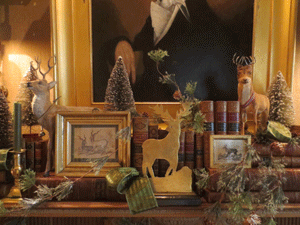 We first visited the beautifully decorated home of Royal Oak member Benjamin Bradley in 2011 and it has quickly become a favorite holiday tradition! We are thrilled to return once more to this winter wonderland filled with antique ornaments, vintage santas, and beautifully handcrafted decorations that he collected over the years.
We first visited the beautifully decorated home of Royal Oak member Benjamin Bradley in 2011 and it has quickly become a favorite holiday tradition! We are thrilled to return once more to this winter wonderland filled with antique ornaments, vintage santas, and beautifully handcrafted decorations that he collected over the years.
Combining his creativity with his love of Christmas, Mr. Bradley even makes his own ornaments using vintage Christmas cards that he painstakingly and intricately cuts, Dresden gilded trim and other materials. These one-of-a-kind handcrafted ornaments are available through his cleverly named site: Ebenezer & Company. Mr. Bradley revealed to us, “I create these ornaments in the hopes that they are lasting heirlooms passed down through the generations…these ornaments serve as a lasting time capsule to the testament of that tradition.” Mr. Bradley’s passion for Christmas is contagious and we can’t wait to see what will be on display this year!
